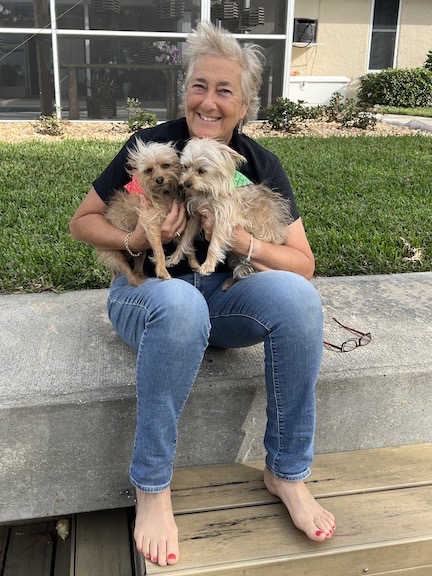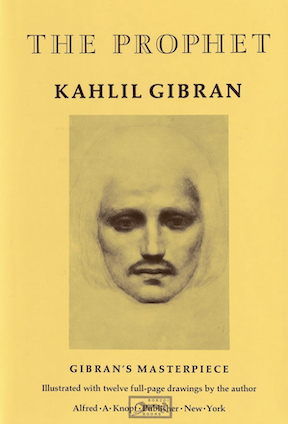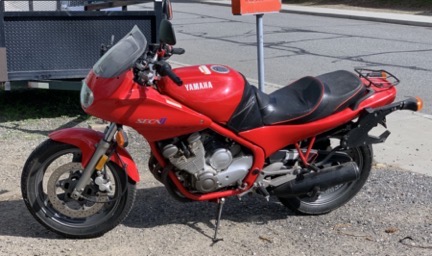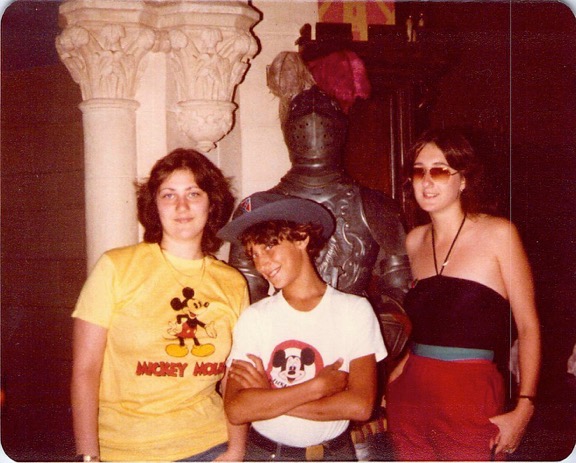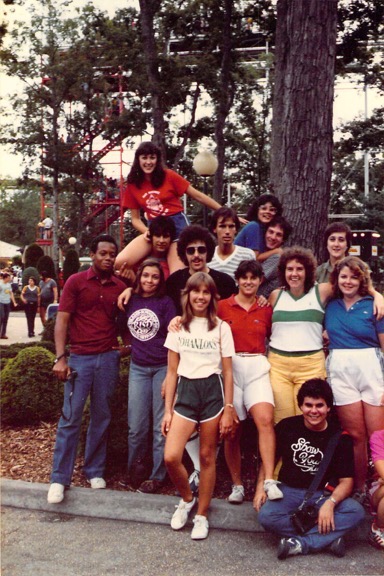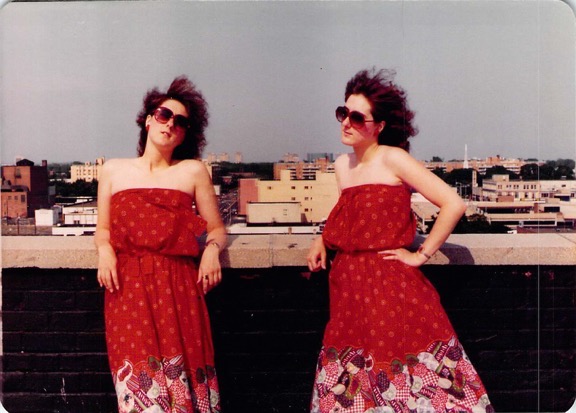I get tired of looking up the same things up over and over again and do something about it — with a software tool that I already have.
My memory for little facts and figures is something I can neither understand or explain. I can tell you the phone number for the house I grew up in (and left in 1977), as well as phone numbers for my grandparents’ homes and even my aunt — all of whom have been dead for more than 20 years now. (Heck, my dad’s parents died in the 1980s!) But, for the life of me, I can’t remember the pixel dimensions of a YouTube video thumbnail, which is a piece of information I need every time I publish a video on YouTube.
Little things like this haunt me. I found myself looking up the same information, over and over. It was a frustrating waste of time, especially when I didn’t have a way to look it up. In case you’re wondering, the Internet isn’t always available when you’re on a boat in a remote area of British Columbia. (And yes, I’d have a Starlink by now if I did’t think Elon Musk was such a shithead. By I digress and I definitely don’t want to discuss the Space Karen here.)
So I started taking notes.
It didn’t go very well. The problem is, I took notes on paper. Notebook paper, usually. But I didn’t always take notes in the same notebook and I’d sometimes misplace notebooks with notes. And I travel a lot and usually forget to take the notebooks with me. So I start new notebooks. And even if I did stick with a notebook for more than a week, the notes weren’t organized in any way. It was just a mess.
And then I thought about my To Do software, which exists on my computer, my phone, and my tablet. I can add an item to my to do list or consult the list or check off a completed item pretty much anywhere I was because I always had at least one of those devices at hand. The app on each device shared the same databases and automatically synced. Clearly, I needed something like that for note-taking.
I know Apple has a Notes app, but I’ve never been able to get it to sync between all my Apple devices. But there was one app I already had on all the devices and it was already sharing one database: Scrivener.
Scrivener is supposed to be a writing app. People on social media who write books (or want to write books) rave about it. They rave so loud and frequently, that I’ve tried using it to write books. I’ve tried at least three times with three different versions of the app. And I’ve failed as many times as I’ve tried.
The trouble is, I’ve been using Microsoft Word since 1989. I have written all kinds of things with it, including entire books and the scripts for video courses about it. I know Word (and Excel, for that matter) better than almost any other software I use. Scrivener does things Scrivener’s way. I do thing Word’s way. I just couldn’t be bothered learning enough about Scrivener’s way to use Scrivener to write books. Why learn to use a new tool when the old tool is working fine?
I could, however, use it to take notes.
My memory issue extends to the work I do as a silversmith. When I make items such as earrings and bracelets for sale, I need to have consistency in the way they are produced. I don’t make one of each earring design. I make dozens. And I don’t make them all the same day. The only way to ensure that I was making them the same way every time I made a batch — given my crappy memory for details — was to create what I called a “Recipe Book” for my jewelry.
Years ago, I created a Scrivener file, which lives in a Dropbox folder. (Dropbox is a cloud computing storage service where I put things I want to be able to access from all of my devices.) The Mac OS and iOS versions of Scrivener all have access to this file. I created folders for the type of item, such as Findings, Earrings, Bracelets. And then subfolders inside each of those folders such as the Sheet Metal, Wire Earrings, and Bead Earrings folders inside the Earrings folder. And then actual pages inside the appropriate folder. Each page listed the “ingredients” — materials, supplies, and tools — and steps for making one specific item.
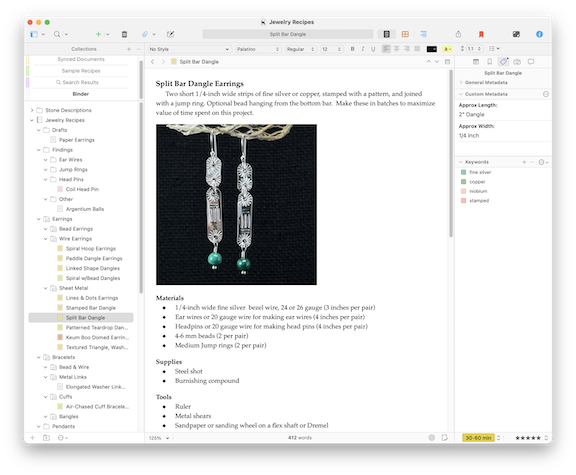
Here’s one of the pages in my Jewelry Recipes file, which has expanded over the years to include descriptions of the stones I use in my work as well as boilerplate text I use in online shop listings.
This works like a charm, provided that I create page for each item. For example, my Split Bar Dangle earrings page describes the earrings, shows a picture of them, and lists all the materials, supplies, and tools I need to make them. That’s how I know that I need 3 inches of 1/4 inch wide 24 or 26 gauge fine silver bezel wire (among other things) for each pair. I don’t have to guess what I used last time I made them or measure a pair I might still have in inventory. I have the recipe and I can follow it, step by step, with the same ingredients.
What if I created another file that just had miscellaneous notes in it? Organized onto pages and maybe with folders to keep things easy to find?
It seemed like a no-brainer, so that’s what I did.
This is a life-changing (for me) productivity hack. Not only am I using it to note down the dumb things I find myself looking up online (and elsewhere) over and over again, but I’ve also begun using it as a place to keep notes for projects I’m working on.
For example, I’m currently preparing to get my boat on a charter program next season and I need to take care of some upgrades. As I do research and get answers from knowledgeable people on the TugNuts forums and elsewhere, I copy and paste the info into a page in my Notebook. When I need the info, it’s right there.

Here’s my note page for the upgrades I need to complete on my boat this winter. Everything is right where I need it.
So sure, Scrivener might be “the go-to app for writers of all kinds, used every day by best-selling novelists, screenwriters, non-fiction writers, students, academics, lawyers, journalists, translators and more.” (Per Literature and Latte’s marketing material for Scrivener. But it also makes a damn good notebook app, keeping your data anywhere you need it.
Now if only I could stop buying empty notebooks…


